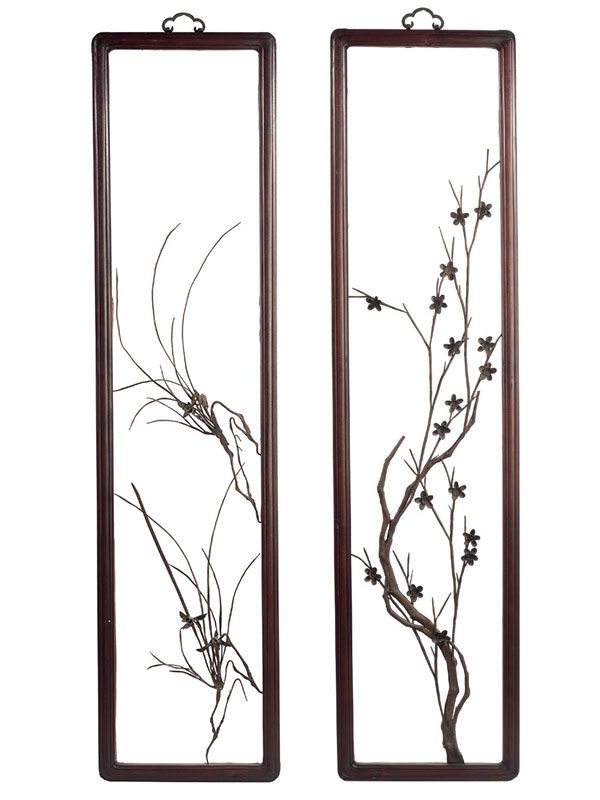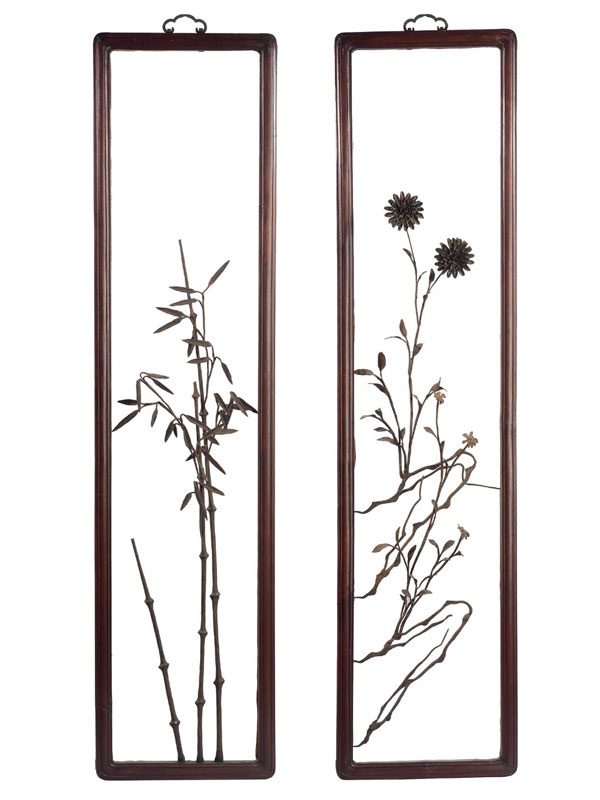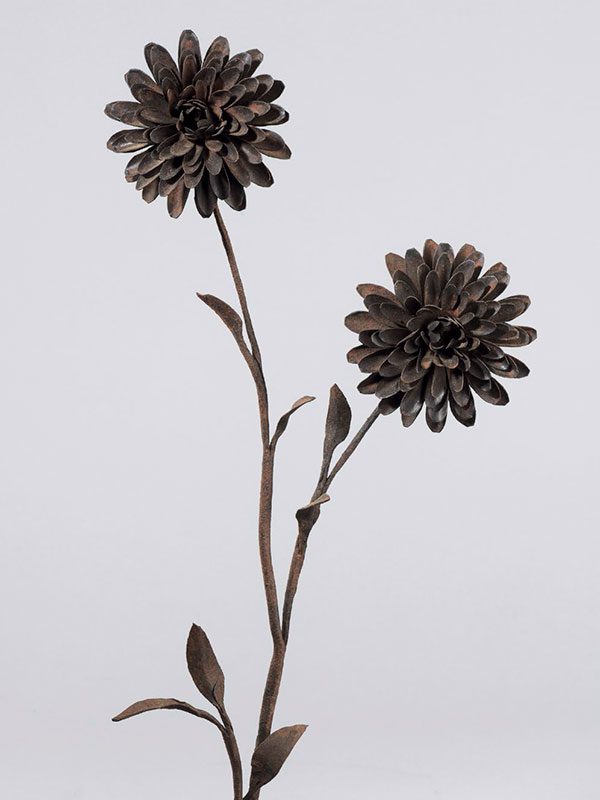Four iron paintings, tiehua
A set of four iron paintings, depicting respectively a gnarled branch of flowering prunus, orchids, strands of bamboo and chrysanthemums. The delicately rendered plants are all made of wrought-iron elements, which are crafted individually and bolted together. Each painting is contained within a hardwood frame with a ruyi-shaped metal handle and the inventory number L40.19.6 painted in red on the side.
These four panels of excellent quality are among the finest examples of iron imitating ink painting. Developed in the 17th century in Wuhu city of Anhui province, the technique was derived from hammered iron candleholders in the shape of flowers made for Buddhist temples, hence the name in Chinese tiehua, which literally translates as ‘iron flowers’. The birth of tiehua was attributed to a Wuhu blacksmith, Tang Peng (also known as Tang Tien-chi, 1644 – 1722), who was inspired by Chinese ink paintings depicting landscapes by the painter Xiao Yun-Cong (1596 – 1673) and vied to recreate these paintings in iron.1 It was not until the 18th century that the art of tiehua was noticed by scholars in Beijing, who started to express the beauty of iron paintings in poems. The combination of plants representing the four seasons of the year is known as Sijunzi, translated variously as the Four Gentlemen or Four Plants of Virtue. 2 A smaller set of 18th century iron paintings of the four plants representing the seasons is in the collection of the British Museum, one of which is illustrated by Jenyns.3 Another comparable set of iron paintings depicting four plants are also in the John Reilly Jr. collection and illustrated in The Romance of Chinese Art. 4 A set of four iron paintings from the Shanghai Museum, dated to the 17th century, including one with comparable prunus branches, was included in the exhibition The Chinese Scholar’s Studio: Artistic Life in the Late Ming Period in 1987.5
Provenance: The collection of John Reilly Jr., who acquired them in China c. 1925 – 30
Exhibited: The Metropolitan Museum of Art, New York, October 1941, ‘Chinese Pictures in Iron –XVIII and XIX Centuries’.
Published: R. L. Hobson, The Romance of Chinese Art, 1929, Garden City Publishing, New York, pl. 46-8, p. 163
- Jenyns, R. S. and Watson, W., Chinese Art, vol. II, Phaidon, Oxford, 1980, p.104
- Welch, P. B. Chinese Art- A Guide to Motifs and Visual Imagery, Tuttle publishing, 2012, p. 21
- Jenyns, R. S. and Watson, W. op. cit. no. 72, p.104
- Hobson, R. L. The Romance of Chinese Art, 1929, Garden City Publishing, New York, pl. 46-6, p. 163
- Li, C. T. and Watt, James C.Y. eds, The Chinese Scholar’s Studio: Artistic Life in the Late Ming Period-An Exhibition from the Shanghai Museum, Thames and Hudson, New York, 1987, no. 68 pp. 120-121



